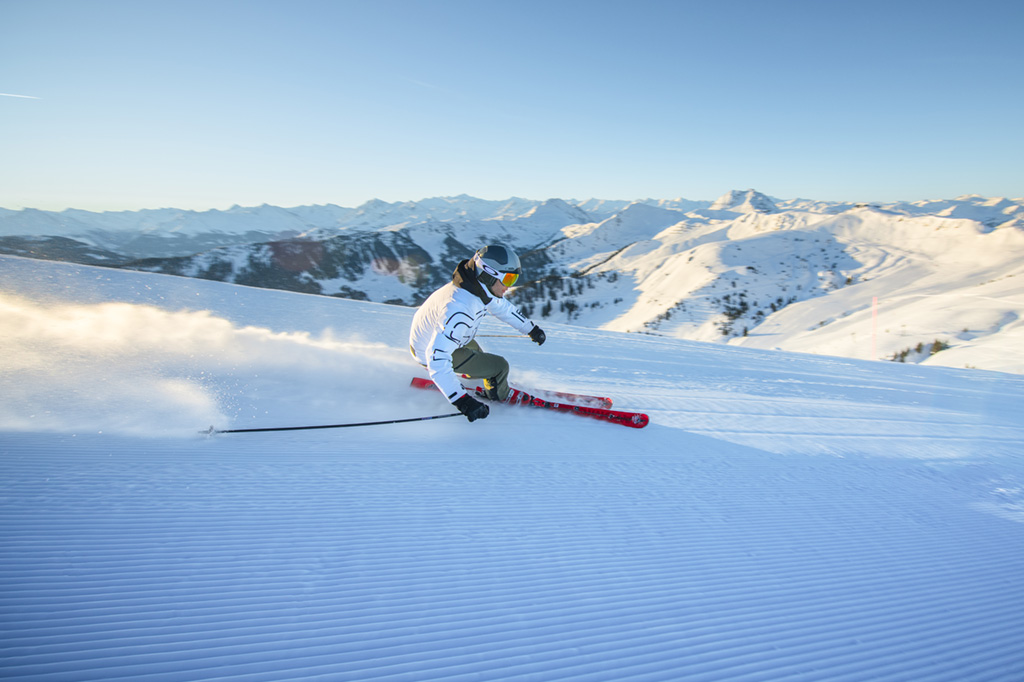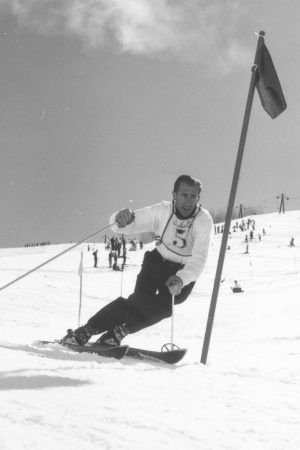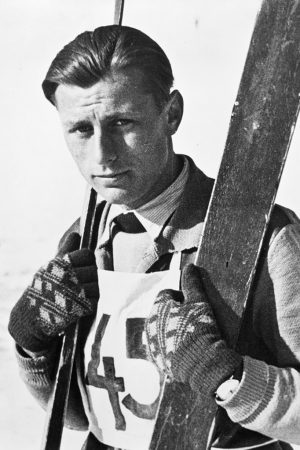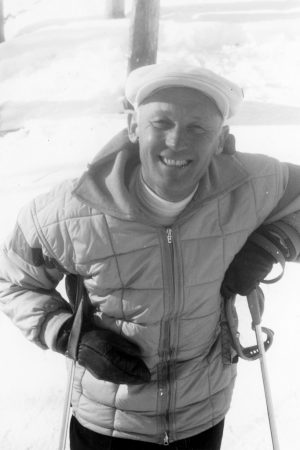Austria and the little town of Sun Valley, Idaho, have been connected since before Sun Valley was truly born. In 1935, Averell Harriman, chairman of Union Pacific Railroad and an avid skier, hired his skiing friend, Austrian Count Felix Schaffgotsch, to ride his trains around the mountains of Western America in search of the perfect location for a great American destination ski resort.
Harriman’s order, which was a tall one, was to “…find an area where the powder is dry, the sun shines all day, and the harsh winds of winter don’t penetrate.” And Harriman insisted that the resort be on or close to the Union Pacific line. After several weeks of searching, the Count heard about the small mining community of Ketchum, Idaho, at the end of a Union Pacific spur. He arrived and quickly wired Harriman: “This combines more delightful features than any place I have ever seen in Switzerland, Austria, or the U.S. for a winter resort.”

Within eight months, Union Pacific Railroad, under Harriman’s leadership, had bought 3,888 acres of ranch land east of Ketchum from the Brass family, built the Sun Valley Lodge, installed two ski chairlifts, the world’s first—one on Proctor Mountain, the other on Dollar Mountain—and opened the Sun Valley Resort in time for the 1936 ski season.
The rest is history, a significant part of it determined by Adolf Hitler, Nazi Germany, and the approach of World War II, a dynamic familiar to ski historians but less so to today’s general skiing public.
Even before the “Anschluss” by which Germany annexed Austria in 1938, Hans Hauser, an Austrian, became the first ski school director at Sun Valley. Anschluss means connection, and that particular one caused many of the best skiers of Austria to flee their home country and immigrate to America. Many of them were young men who had spent their lives skiing.
- Christian Pravda. Photo courtesy The Community Library Center for Regional History
- Hans Hauser. Photo courtesy The Community Library Center for Regional History
- Sigi Engl. Photo courtesy The Community Library Center for Regional History
Two of the most famous Austrian skiers to immigrate to America were Hannes Schneider and Sigi Engl, and they were both enormous influences on the development of American skiing and ski resorts. That is, immigrants fleeing tyranny in their homeland have long proved to be significant assets to America, as evidenced by the history of American skiing and the community and culture of Sun Valley, Idaho.
Engl, who was from Kitzbühel, was one of the great ski racers of his time, winning Kitzbühel’s Hahnenkamm race and the Austrian National Championships twice. He was also a fine and popular instructor who immigrated to America in 1937 to teach skiing at Badger Pass in Yosemite before moving to Sun Valley in 1939. He was director of the Sun Valley Ski School from 1952 until 1972.
Over his tenure, Engl was responsible for bringing some of the best skiers and instructors from his hometown 5,355 miles away, to Sun Valley. They include:
Christian Pravda, a two-time winner of the Hahnenkamm who was also 1954 world champion in the downhill. His son, Chris, is still a member of the Sun Valley Ski School.
Konrad Staudinger was a member of Austria’s 1956 Olympic Ice Hockey Team. After the Olympics he moved to Sun Valley and was one of the most popular members of the ski school for 50 years before retiring and moving back to Kitzbühel in 2008. He still visits Sun Valley once a year.
Rainer Kolb, though born in East Germany, moved to Kitzbühel as a child and learned to ski, race, and teach there. Kolb was director of the Sun Valley Ski School from 1974 until 1999. He was also producer of Sun Valley’s renowned Ice Shows.
Hans Thum moved from Kitzbühel to Sun Valley more than 50 years ago and is still working for the Sun Valley Ski School. His son, Hannes, graduated from Sun Valley Community School in 2003 and returned in 2009 as a science teacher and trip leader for the school’s Outdoor Program.
Other Kitzbühelers who have worked on the ski school include Heinz Achhorner, Karl Beznoska, Rudi Erler, Peter Erler and Heiner Koch.
During a 1956 White House Summit on citizen diplomacy, President Dwight D. Eisenhower founded the U.S. Sister Cities movement. Sister Cities International (SCI), a nonprofit organization, was subsequently established to build and foster these connections. And it was in 1967 that Sun Valley and Kitzbühel officially became sister cities through SCI.
SCI’s mission is to “…create global relationships based on cultural, educational, information and trade exchanges.”
Today, SCI is the nation’s foremost citizen diplomacy organization with more than 2,300 communities participating in 130 countries. The organization reports, “… participants [have] developed lifelong friendships that provide prosperity and peace through person-to-person citizen diplomacy.”
Sun Valley and Kitzbühel have been sister cities for over 52 years now, which happens to be just about the median age of Sun Valley residents (53). Appropriately enough, since the movement was inspired by a great World War II military leader who knew more about the true costs of war and the true values of peace than most, Sun Valley’s other sister city is Yamanouchi, Japan.





